Realizing Children’s Rights in Mali
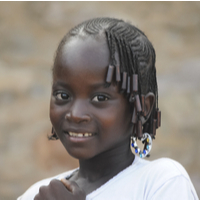
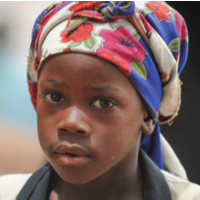
The Republic of Mali’s population is one of the youngest in the world with a median age of sixteen. It is also one of the most challenging places in the world in which to be a child, according to the 2021 End of Childhood Index (Global Childhood Report 2021, 2021). Extreme poverty, food insecurity, malnutrition, gender-based violence and early marriage are all hallmarks of the in the lives of children. Children there are also on the frontline of the climate crisis, with the Sahel region warming at a rate that is one and a half times faster than the global average, causing devastating cycles of drought and flooding. An escalation in conflict in recent years means that Mali today is grappling with an unprecedented emergency, which continues to worsen (Save the Children, 2021).

Children’s Rights Index: 5.01 / 10
Black level: Very serious situation
Population: 20.25 million
Pop. ages: 0-14: 47 %
Life expectancy: 59.3 years
Under-5 mortality rate: 94 ‰
Mali at a glance
The Republic of Mali is a landlocked country in Western Africa and is one of the largest countries on the continent. It has a relatively small population that is largely centred along the Niger River (Andrew Clark, 2021).In pre-colonial Mali, for centuries, its northern city of Timbuktu was a key regional trading post and a centre of Islamic culture.
Timbuktu is situated in Mali on the upper Niger River but has lost its historical prominence. In the late 19th century, France colonized Mali and then referred to it as French Sudan (BBC News, 2020). By 1960, the former colonial territories had become independent republics, with French Sudan changing its name to the Republic of Mali (The Editors of Encyclopaedia Britannica, 2021). Mali is bordered to the north by Algeria, on the east by Niger and Burkina Faso, on the south by Côte d’Ivoire and Guinea, and on the west by Senegal and Mauritania.
After gaining independence from France in 1960, Mali suffered droughts, rebellions, a coup and twenty-three years of military dictatorship until its democratic elections in 1992 (BBC News, 2020). Mali has struggled in recent years to maintain governmental stability with coups in 2012 and 2020 being evident. Mali was once viewed as an emerging force for democracy in West Africa; however, years of conflict and extreme poverty have significantly halted the country’s social, political and economic development.
Status of children’s rights
Mali ratified the United Nations Convention on the Rights of the Child 1989 (CRC 1989) on 20 September 1990 (OHCHR, 2021). Other key international treaties ratified by Mali are the Optional Protocols on the Sales of Children, Child Prostitution and Child Pornography and on the Involvement of Children in Armed Conflict and both conventions were ratified on the 16th May 2002(OHCHR, 2021). Mali signed the Optional Protocol to the CRC on a Communication Procedure on 28 February 2012 but has not yet ratified the Optional Protocol (United Nations Treaty Collection, 2021).
These Optional Protocols add and complement the CRC 1989, under the Optional Protocol on the Involvement of Children in Armed Conflict states that are required to “take all feasible measures” to ensure that members of their armed forces under the age of eighteen do not take a direct part in hostilities. States must also raise the minimum age for voluntary recruitment into the armed forces from fifteen years but does not require a minimum age of eighteen (OHCHR, 2021).
The Optional Protocol on the Sales of Children, Child Prostitution and Child Pornography provides definitions for the offences of ‘sale of children’, ‘child prostitution’ and ‘child pornography’ (OHCHR, 2021). Additionally, it creates obligations for governments to criminalize and punish activities related to these offences (OHCHR, 2021). It further requires punishment not only for those offering or delivering children for the purposes of sexual exploitation, transfer of organs or children for profit or forced labour, but also for anyone accepting the child for these activities.
The Optional Protocol on the complaints mechanism does not add new rights in the same way as the other optional protocols nor does it expand on specific areas in children’s rights. The Optional Protocol is referred to as “procedural” because it provides a process for bringing violations of existing children’s rights to attention (Child Rights International Network, 2021). The Optional Protocol allows the Committee on the Rights of the Child to hear complaints that a child’s rights have been violated. Children from countries that have ratified the Protocol can use the treaty to seek justice if the national legal system has not been able to provide a remedy for the violation (OHCHR, 2021).
From a regional standpoint, Mali ratified the African Charter on the Rights and Welfare of the Child 1990, (ACRWC 1990) on the 3rd of June 1998 (African Commission on Human and People’s Rights, 2021). Additionally, Mali has ratified the Protocol to the African Charter on Human and People’s Rights on the Rights of Women in Africa referred to as the Maputo Protocol on the 13th January 2005 (African Union, 2003). The preamble of the Maputo Protocol reaffirms the importance of gender equality and the elimination of discrimination and harmful practices such as female genital mutilation (FGM) , which hinders or endangers the physical and psychological development of women and girls (African Union, 2003).
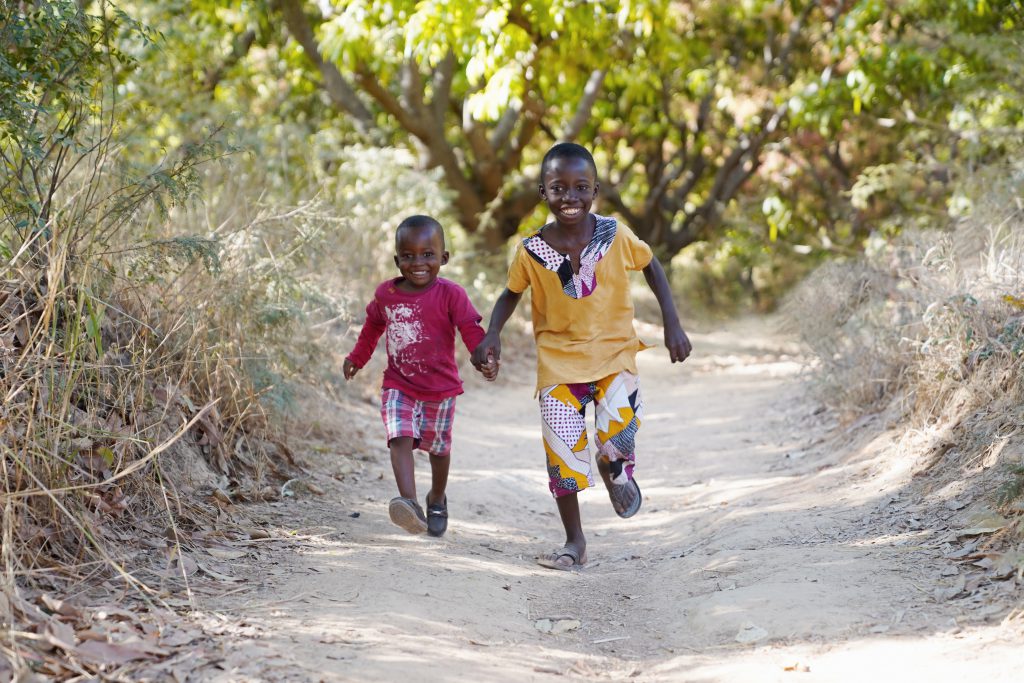
At the national level, Mali has adopted several texts aimed at promoting the rights of the child including the development of a Child Protection Code 2002 (Child Law Resources, 2021). The child protection code provides for the appointment of child protection officers to intervene in all cases where the health, physical or moral integrity of the child is threatened or exposed to danger. The code also requires any person, including those bound by professional secrecy, to report any matter that may potentially threaten the health of a child (including exploitation and trafficking), his or her development, physical wellbeing or moral integrity to the child protection officer.
Addressing the needs of children[1]
Right to education
Although education in Mali has been improving over the last decade, more than two million children aged between five to seventeen still do not attend school, and over half of Mali’s young people aged between fifteen to twenty-four are illiterate (UNICEF Mali, 2021). The issues confronting Mali’s education sector are harsh environmental conditions, political unrest, child labour, child marriage, insecurity and a lack of schools close to children’s homes. These are all factors contributing to the high dropout and out-of-school rate in Mali. In addition, nomadic populations, the perceived irrelevance of education, and severe shortages of schools and trained teachers, particularly in rural areas, create massive access barriers to education.
Under Article 18 of the Constitution, it states, “every citizen has a right to education. Public education is mandatory, free, and non-religious. Private education is recognized and must be carried out according to the conditions defined by law”(Child Law Resources, 2021). Additionally, the Education Act 1999 guarantees the right to education for every citizen. It prohibits discrimination on the grounds of “sex, social origin, race or religion” (Child Law Resources, 2021).
Despite the presence of these clear obligations, Mali has struggled to meet them due to the ongoing conflict that has resulted in over 735 schools being closed and 225,000 children being denied the right to education because of insecurity and displacement (Human Rights Watch, 2021). Numerous teachers were threatened, and schools vandalized, destroyed, or occupied by armed groups. Compounded with the outbreak of Coronavirus, most schools have been forced to remain closed and this has only served to the detriment of the children especially those living in the rural areas. In Mali, at least twenty-seven attacks on middle schools were recorded when schools reopened for children to take their exams in June 2020 (Human Rights Watch, 2020).
Moreover, access to and completion of schooling is inequitable, with girls and children from the poorest families at the highest risk of school dropouts: only 73.8% of girls are enrolled in primary basic education, compared to 85.8% of boys (UNICEF Mali, 2021). By the time they reach secondary education, the proportion of girls enrolled is only 15% compared with 21% of boys.
Right to health
Health in Mali continues to be a challenge due to preventable diseases such as pneumonia, diarrhoea and malaria being the primary cause of death in regard to children’s diseases (UNICEF Mali, 2021). Unfortunately, only 45% of the children in Mali receive all the basic vaccinations and 14% receive no vaccination at all, depriving them of protection from common childhood illnesses (UNICEF Health, 2021).
Mali is one of the countries with the highest percentage of severe anaemia among children under 5 years of age and the countries that documented the highest rates of malaria are Senegal (26%), Mali (16%), Guinea (14%) and Mozambique (12%). For most other countries, severe anaemia ranges from 5% to 10% (World Health Organization, 2019). Access to quality health services and skilled healthcare workers, particularly in the north and centre of the country, is severely limited as a result of which every tenth child in Mali dies before the age of five, while one in thirty new-borns does not survive their first month of life (UNICEF Health, 2021).
Chronic malnutrition, or stunting, affects more than 26% of children in Mali (UNICEF Mali, 2021). Stunting has long-term effects on children’s physical and cognitive development and makes them more susceptible to sickness, which then leads to poor performance in school. Mali also has one of the highest rates of acute malnutrition worldwide and severe acute malnutrition, both of which are the deadliest form of malnutrition, which affects 2% of children.
Chronic malnutrition decreased nationally from 26.6% to 23.1% but almost doubled in the Kayes region from 11% in 2016 to 20% in 2017 (Child Protection Global Protection Cluster, 2018). The reasons for that are linked to the deterioration of the food situation in certain localities. Thus, cases of severe acute malnutrition (SAM) expected in 2018 have risen nationally from nearly 163,000 at the beginning of the year to 274,000 and cases of moderate acute malnutrition (MAM) from 470,000 to 582,000 cases.
Right to water and sanitation
Ensuring the availability of clean water, basic toilets and good hygiene practices are essential in promoting child health and survival however this remains a concern in Mali (UNICEF Mali, 2021). Only about one-half of schools have an improved water point, and less than 20% of schools have functional, separate toilets for boys and girls (UNICEF Mali, 2021).
In addition, more than one million people in Mali still practice open defecation, which has a direct impact on the health, dignity and safety of the communities. Only 39% of the overall population has access to basic sanitation services, resulting in a high incidence of childhood diarrheal illness and malnutrition (Global Waters, 2021). Mali has 80% basic water coverage, but continued progress is under threat as the country’s growing population is putting increased pressure on water resources and climate change makes rainfall less predictable.
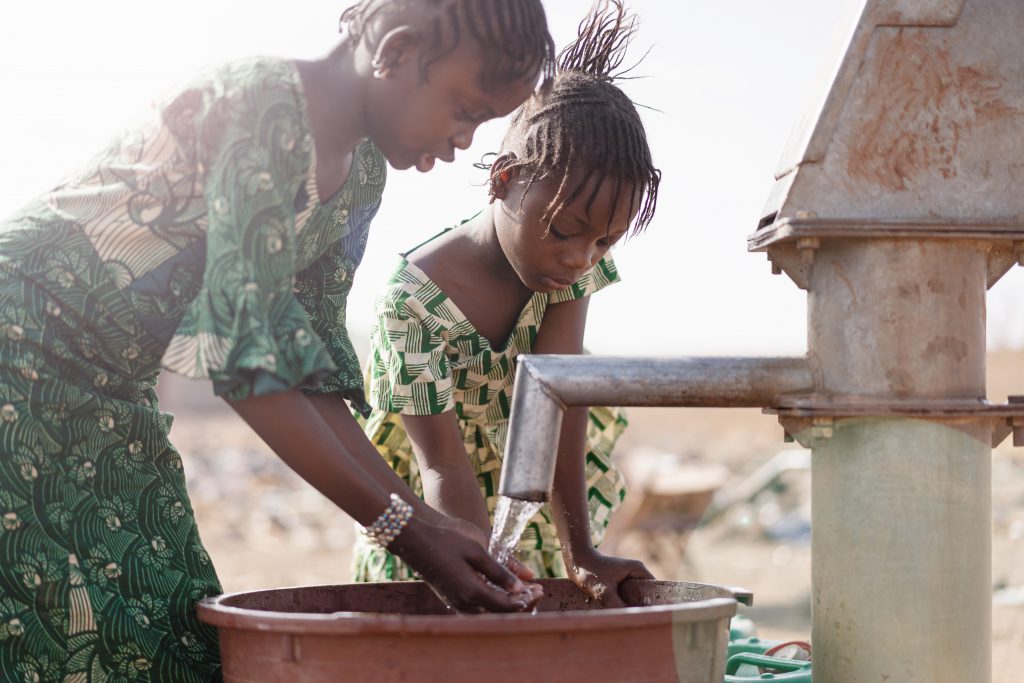
Inadequate drinking water, sanitation and hygiene pose critical health and nutrition risks to all children. Additionally, there are implications on the physical and psychosocial well-being and mobility of women and girls, who are primarily responsible for water collection in Mali (United States Agency International Development Mali, 2021). The use of sanitation facilities that are shared with other households and open defecation practices increases the risk of sexual assault for women and girls, in addition to impeding their ability to safely manage their monthly menstrual cycles in privacy and with dignity.
Right to identity
A birth certificate is a vital document in order to record the birth of a child. The official recording of a child’s birth establishes the existence of the child under the law and provides the foundation for safeguarding many of the child’s civil, political, economic, social and cultural rights. Children without birth registration documents are potentially unprotected from violations such as the inability to access education, the marriage of girls, or sometimes enrolment into armed forces (Brandful, 2021).
The government has a legal obligation to ensure the registration of all births in Mali, even when the parents do not have Malian citizenship. Birth registration is a fundamental right protected by several international legal instruments to which Mali is a signatory. Specifically under the CRC 1989, article 7, the International Covenant on Civil and Political Rights 1966 (the ICCPR 1966) (OHCHR, 2021) under article 24 paragraph 2, and the Convention on the Rights of Persons with Disabilities 2006 (the CRPD 2006) (OHCHR, 2021) under article 18 subsection 2.
Children who are not registered may face statelessness and may be excluded from the benefits of citizenship. Under article 157 of the Code of Persons and Families 2011 (Child Law Resources, 2021), there is a legal obligation to register the birth of a child. A large number of children in Mali, especially those in conflict zones, still do not benefit from this right (UNICEF Mali, 2021). Only 16% of children in rural areas are registered at birth.
In the context of birth registration, non-discrimination implies that States must ensure that access to registration is not undermined by discrimination of any kind, including on the basis of the child’s or the child’s parent’s or legal guardian’s; race, colour, sex, language, religion, political or another opinion, national, ethnic or social origin, property, disability, birth or another status (UN Human Rights Council, 2014). All children should have access to birth registration in the country where they are born, including non-nationals, asylum seekers, refugees and stateless children(Hodgkin & Newell, 2007). The impact of non-registration can result in inequalities in accessing basic services, besides heightening discrimination and vulnerability (UNICEF, 2013). An effective civil registration and statistics system is therefore an important first step to ensuring the protection of children (UN Human Rights Council, 2014).
Risk factors -> Country-specific challenges
Child trafficking
Due to the ongoing conflict, insecurity and Covid-19 has led to a rise in child trafficking, forced labour and forced recruitment by armed groups in Mali (The UN Refugee Agency, 2020). More cases of child recruitment were documented in the first half of 2020 (230 cases) as compared to the whole of 2019 (215 cases) (Global Protection Cluster, 2020).
This results in several child protection risks such as child labour, sexual exploitation, sexual abuse and domestic violence. Armed groups are also trafficking children for labour in gold mines, using profits to enrich combatants, fuel the arms trade and finance the violence (The UN Refugee Agency, 2020).
Children in armed conflict
Recruitment by armed forces has been one of the biggest dangers for children ever since the conflict started in 2013 (Child Protection Global Protection Cluster, 2018). In 2018, almost one-third of Mali’s population were living in areas affected by conflict (UNICEF Mali, 2021). Armed groups in the north and centre, including those allied with the government, continued to recruit and use child soldiers (Human Rights Watch, 2018). This directly contrasts Mali’s ratification of the Optional Protocol on the Involvement of Children in Armed Conflict in 2002 and has resulted in the north and centre of Mali seeing a dramatic increase in violence.
In the region of Mopti, increasing inter-communal violence and the presence of armed groups has resulted in repeated attacks and has led to the killing and maiming of children, their displacement, separation from their families, as well as r exposure to sexual violence and psychological trauma (UNICEF Mali, 2019). Moreover, the United Nations verified 809 grave violations against 535 children (394 boys, 135 girls, 6 sex unknown) which occurred during the reporting period (United Nations General Assembly Security Council, 2021).
In addition, 204 grave violations against 183 children (145 boys, 38 girls) which occurred in previous years were verified later. Children are targeted to be recruited and assigned to several activities, even as suicide bombers (Plan International, 2017). It was documented that the use of children as combatants are encouraged or obliged to actively engage in hostilities (Human Rights Watch, 2018). The case of child soldiers has been extensively reported in Mali since the beginning of the conflict in the year 2013 (Global Protection Cluster, 2020).
Separated and unaccompanied children
Between 2018 and 2020, the number of internally displaced persons in Mali more than doubled, increasing from nearly 110,000 to over 332,957 (UNICEF Mali, 2021). Fifty-six per cent of displaced people are women and girls and 61% are children (UNICEF Mali, 2021). In the northern and central regions, more than 96% of internally displaced persons live in areas where access to water is below the national average of 69% (UNICEF Mali, 2021). Mali has one of the highest mortality rates due to unsafe water; sanitation and hygiene (WASH) in Africa (World Health Organization, 2019).
In Mali, the conflict has been and continues to undermine strong traditional family and community mechanisms for the care of vulnerable community members (Child Protection Global Protection Cluster, 2018). The current intensification of intercommunal conflict, violence and other confrontations in the northern and central regions might indicate potential contributions to the multiplication of separations organized for security reasons.
Moreover, this same factor could contribute to accidental separation and abandonment of children, due in part to migration or following fighting. Children who are displaced are unable to access the healthcare and education services they need (Reid, 2020). Increasing conflict is endangering children and other civilians, especially in Mopti and Menaka, where intercommunity attacks have led to displacements and several deaths.
Child labour
Mali has ratified several conventions in relation to labour and children’s rights. The conventions ratified by the government of Mali are the Forced Labour Convention 1930 (No.29) (International Labour Organization, 1960), Protocol of 2014 to the Forced Labour Convention (International Labour Organization, 2016), Minimum Age Convention 1973 (No.138) (International Labour Organization, 2002) and Worst Forms of Child Labour 1999 (No.182) (International Labour Organization, 2000).
Despite ratifying essential conventions on child labour, in 2013, Mali had at least 2.4 million children engaged in work considered hazardous (Child Protection Global Protection Cluster, 2018). Forty per cent of children between the ages of five and fourteen were engaged in activities that could harm their development. Other reports from 2013 show incidents of slavery in the Northern region, including in the Tamasheq communities of northern Mali where children were sold for agricultural and/or domestic work (Child Protection Global Protection Cluster, 2018).
In 2015, it was reported that child labour in agricultural, domestic and informal work concerned nearly 70% (three million children) of children, 60% of whom were under twelve years of age and 60% in rural areas. Most children involved in child labour activities were found in the south of the country: Sikasso (76%), Segou (68%), and Kayes (60%) (Child Protection Global Protection Cluster, 2018).
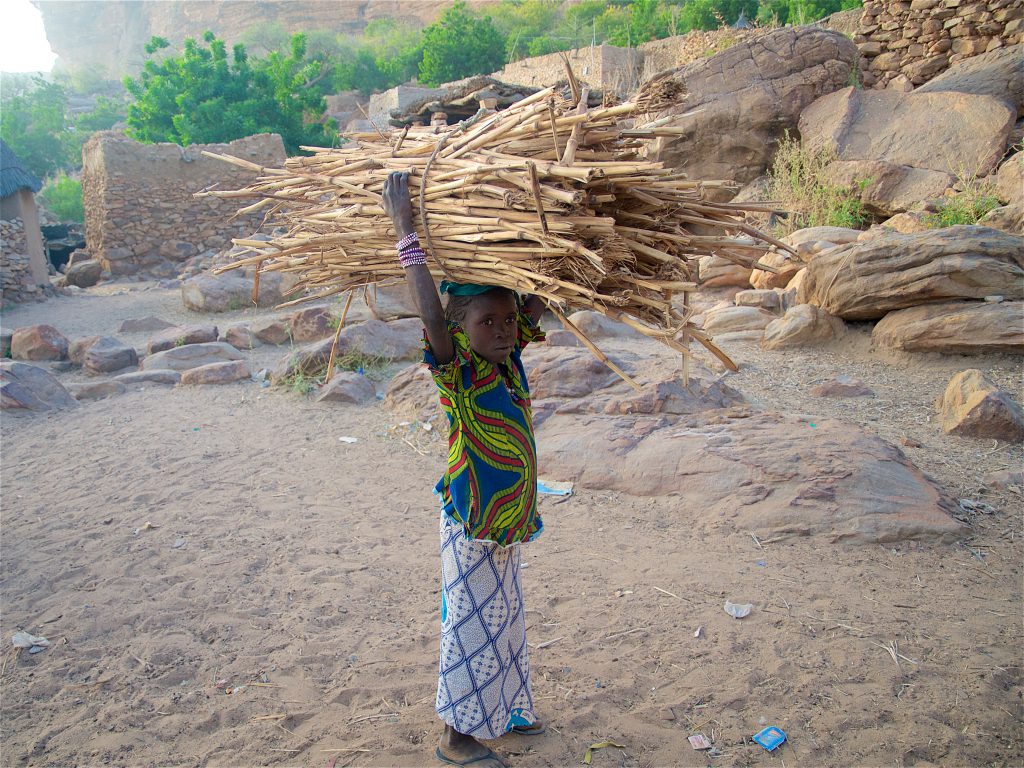
The Labour Code 1992 (Child Law Resources, 2021) was amended in 2017 and has now set the minimum employment age at fifteen (United States of America Department of State, 2018). No child may work more than eight hours per day under any circumstance. The government’s Hazardous Occupations List prohibits certain activities by children younger than age eighteen. Girls between the ages of sixteen and eighteen may not work more than six hours per day. The law applies to all children, including those who work in the informal sector and those who are self-employed.
Child marriage
Child marriage is a fundamental violation of human rights and in Mali; one in two girls is married while still being a child (UNICEF Mali, 2021). Girls who marry before they turn eighteen are less likely to remain in school and are more likely to experience violence while being at greater risk of death due to complications in pregnancy and childbirth. Additionally, child marriage results in separation from family and friends, and the girl child has a lack of freedom to participate in community activities, which has consequences on her mental and physical well-being while limiting her ability to reach her potential and fully participate in developing families, communities and society.
In some regions of the country, especially Kayes and Koulikoro, girls are married off as early as the age of ten. It was common practice for a fourteen-year-old girl to marry a man twice her age (United States of America Department of State, 2018). Child marriage deprives a girl of her childhood and increases the likelihood of early pregnancy (UNICEF Mali, 2021).
Female genital mutilation (FGM)
In addition to child marriage, Mali has one of the highest rates of female genital mutilation (FGM) worldwide and the practice affects more than 73% of the girls aged between zero to fourteen (UNICEF Mali, 2021). For the vast majority of circumcised girls, circumcision is carried out between the ages of zero to five (Institute National de la Statics and ICF, 2019). FGM is a fundamental violation of the right of a child to survive and thrive. It hampers the ability for girls to become healthy adults who can create better lives for themselves and their communities.
There is currently no national legislation in Mali, which specifically criminalises and punishes the practice of FGM, despite the country ratifying the Maputo Protocol and therefore accepting the provisions within the Protocol to eliminate FGM by enacting requisite and supportive national legislation. Although FGM is legal, authorities prohibit the practice in government-funded health centres (United States of America Department of State, 2018).
Environmental challenges
From 2016 to 2018 (Sida’s Helpdesk for Environment and Climate Change, 2013), Mali experienced severe drought that affected their growing seasons (Reid, 2020). This affected food security and nutrition, which in turn affected the children’s overall wellbeing, further leading to them suffering from chronic malnutrition. One in three children today are short for their age, indicating that this is due to high levels of malnutrition.
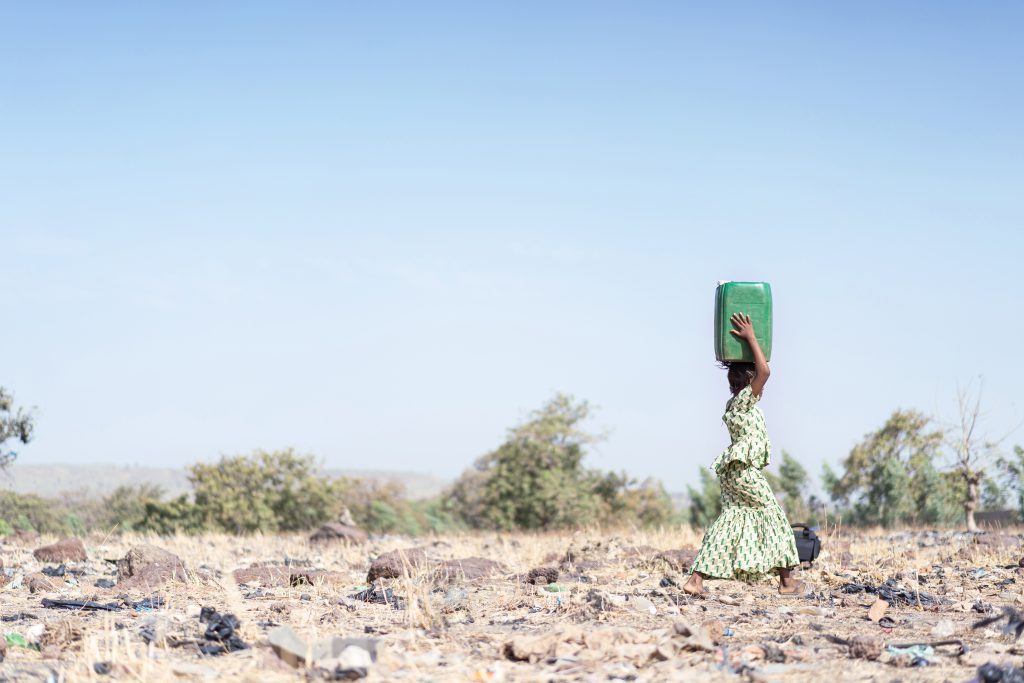
There are strong links between environmental and health concerns in Mali, particularly related to malnutrition, indoor air pollution and water-related diseases. In Mali, about 81% of children have some sort of anaemia and 38% of children under the age of five years show significant levels of stunting and wasting. In recent years the increase in temperature, desertification and unpredictable rainfall, has led to people migrating with their livestock in search of natural resources. This in turn creates tensions and competition between communities, which can quickly escalate into localised violence making climate change a driver of violence (International Committee of the Red Cross, 2021).
Scarcity and continued degradation of natural resources is contributing factor to malnutrition, economic hardship, migration and violent conflict in Mali (Sida’s Helpdesk for Environment and Climate Change, 2013). At the same time conflict and insecurity generally fuels unsustainable management of natural resources.
Written by Igi Nderi
Internally proofread by Aditi Partha
Last updated on 7 August 2021
References:
Andrew Clark. (2021, June 11). Mali. Retrieved from Britannica.
BBC News. (2020, May 26). Mali Country Profile. Retrieved from BBC News World Africa.
BBC News. (2020, August 26). Mali profile-Timeline. Retrieved from BBC News World Africa.
Brandful, J. (2021, July 18). The right start to life. Retrieved from UNICEF Mali.
Global Waters. (2021, July 17). Where we work-Mali. Retrieved from Global Waters.
Hodgkin, R., & Newell, P. (2007). Implementation Handbook on the Rights of the Child. In R. Hodgkin, & P. Newell, Implementation Handbook on the Rights of the Child (p. 97). Geneva: United Nations Children’s Fund.
Human Rights Watch. (2018, January 1). Mali Events of 2017. Retrieved from World Report 2018.
Human Rights Watch. (2021, July 14). Mali Events of 2018. Retrieved from Human Rights Watch.
OHCHR. (2021, July 13). Reporting status for Mali. Retrieved from UN Treaty Body Database.
Plan International. (2017). Child Friendly Spaces Providing Child Protection and Education in Conflict Settings: A Case Study from Timbuktu, Mali. London: Plan International.
Save the Children. (2021, May 27). Protecting Children In Mali. Retrieved from Save the Children.
UNICEF. (2013). A Passport to Protection: A Guide to Birth Registration Programming. New York: United Nations Children’s Fund.
UNICEF Data. (2021, August 5). Mali Key Demographic Indicators. Retrieved from UNICEF Data.
UNICEF Health. (2021, July 14). Mali Health. Retrieved from UNICEF.
UNICEF Mali. (2021, July 17). Child Protection. Retrieved from UNICEF Mali.
UNICEF Mali. (2021, July 14). Children in Mali. Retrieved from UNICEF Children in Mali.
UNICEF Mali. (2021, July 14). Education. Retrieved from UNICEF Mali.
UNICEF Mali. (2021, May 1). Humanitarian Action for Children. Retrieved from UNICEF Mali.
UNICEF Mali. (2021, July 17). Water, Sanitation and Health. Retrieved from UNICEF Mali.
[1] This article by no means purports to give a full or representative account of children’s rights in Mali; indeed, one of the many challenges is the scant updated information on children, much of which is unreliable, not representative, outdated or simply non-existent.

